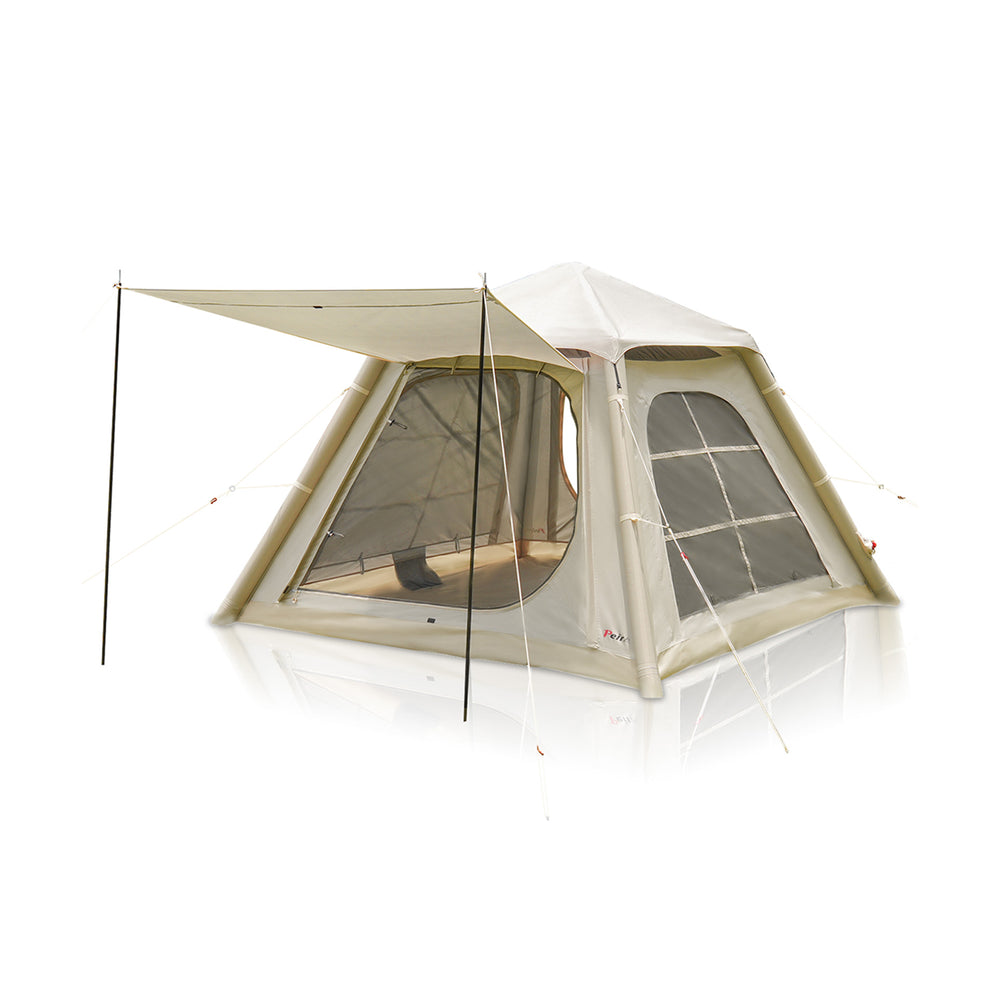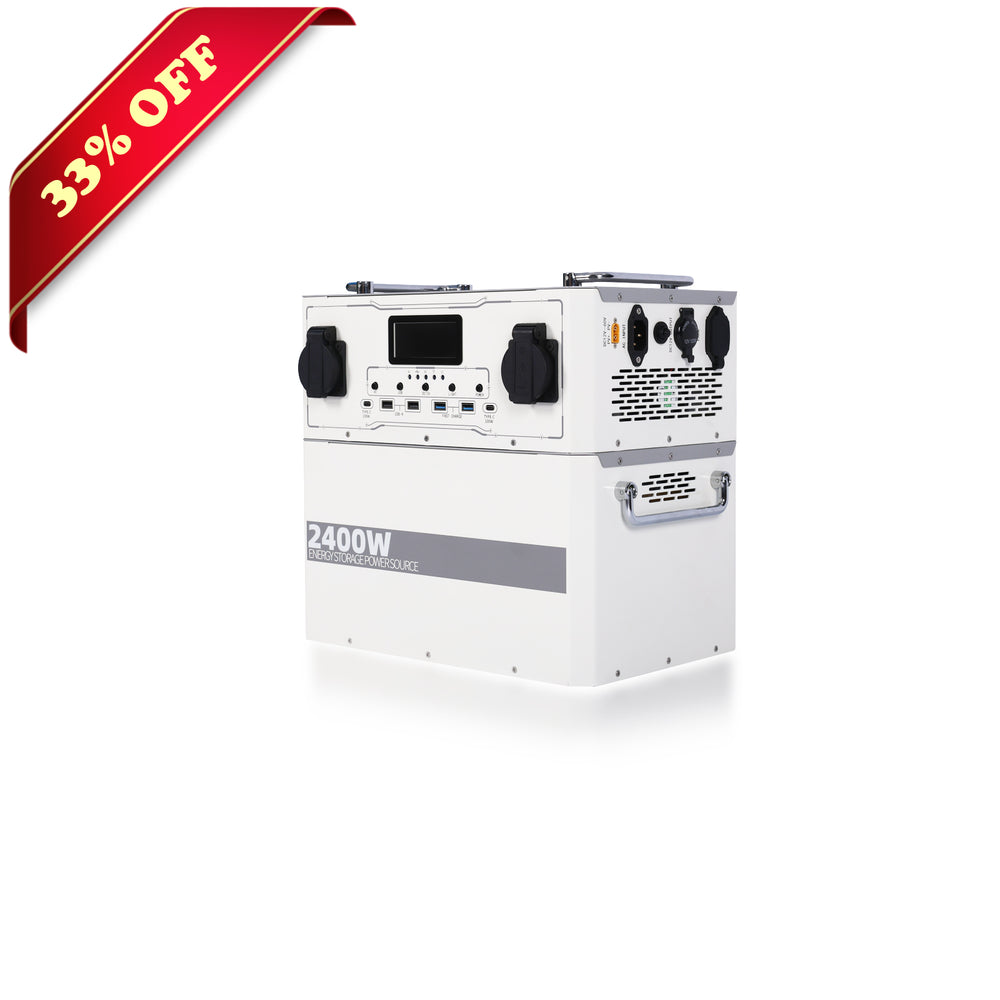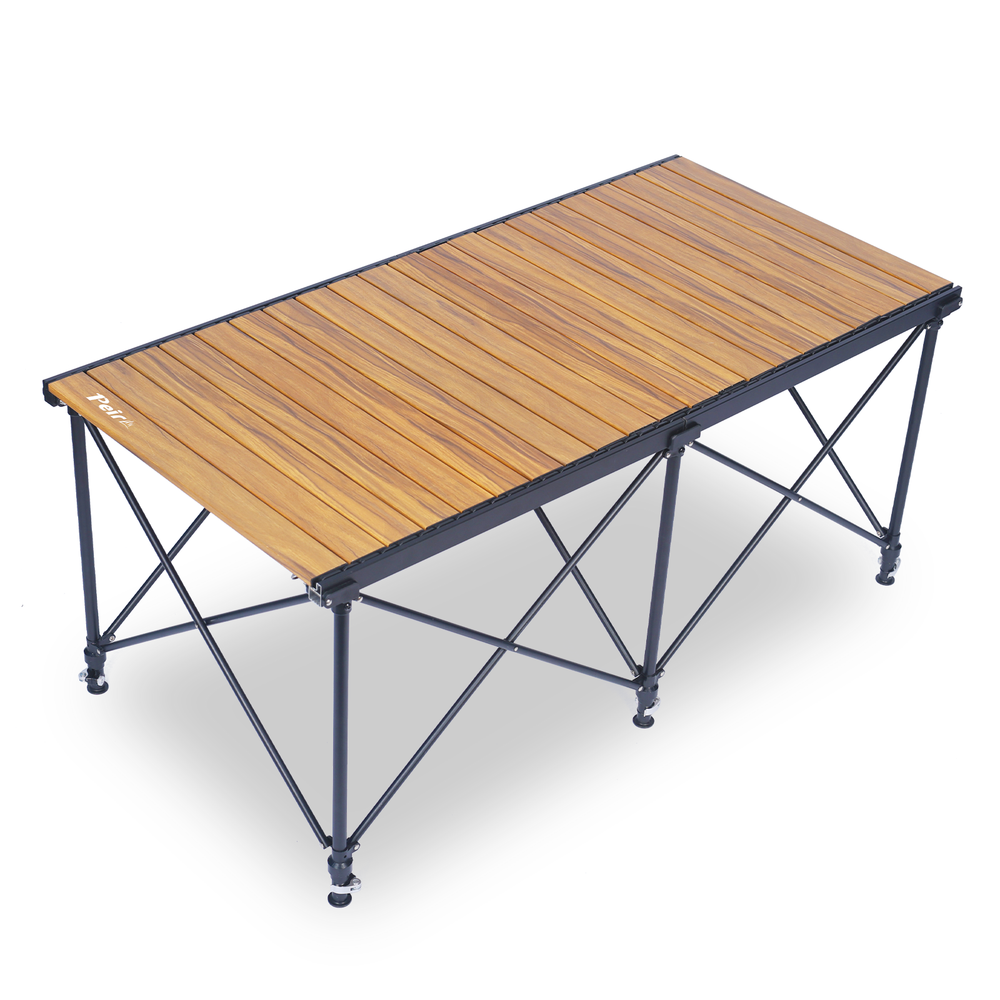When you first start camping, it's not easy to know what you're going to need. To help you choose the gear you need for camping, we've put together a list of items you should bring on any camping trip, whether you're RVing or backpacking.
1. TENT
A good shelter is very important because it will protect you from the elements and keep you dry, warm and comfortable.
WHAT TO LOOK FOR:
If the weather hits, being able to huddle inside your tent for hours is important, so choose a tent that isn't cramped and has enough room for each person. Before you buy, crawl around inside the tent to check the floor length and ceiling height. Can you sit up straight? Can the tallest person in your group stretch out fully?
Three-season shelter: For spring, summer, and fall camping, opt for a “three-season” shelter, which typically has a tent body, a rainfly, and mesh panels, which provide good ventilation and keep the interior from getting stuffy and damp.
If you’re camping with small children, you can go big with a inflatable camping tent designed to sleep a set number of people. Consider providing older children with their own decent-sized tent, too, for extra room and privacy.
Key extras: A two-door tent will let you get out without crawling over a companion, and larger vestibules offer room to store backpacks and dirty boots.
2. SLEEPING BAG
A good sleeping bag is just as important as a good tent. If you're uncomfortable sleeping, you won't enjoy the trip.
WHAT TO LOOK FOR:
Sleeping bags are rated to be comfortable in a certain temperature range, so look for one that covers the coldest temperatures you'll be exposed to. Keep in mind that the rating listed is an estimate. If you tend to get cold, buy a bag that's 10 or 15 degrees warmer than the coldest temperature you'll be exposed to. Or buy a bag liner to add warmth.
Rectangular vs. Mummy Sleeping Bag:
For mild climates, where temperatures don't drop below 10 degrees Celsius, you can use a less expensive rectangular bag. For colder climates, choose a mummy-shaped bag, which surrounds your body to eliminate areas where cold air can collect. If you're backpacking, mummy bags are the best option because they're lighter and less bulky.
Major brands offer bags with torso and hip areas tailored to a man's or woman's size. Also, avoid a bag that's too long, because if there's a lot of empty space in the foot area, you'll get cold.
Synthetic vs. Down Insulation:
If you need to save money, buy a bag with synthetic insulation, rather than down. Synthetic insulation bags are sometimes heavier and bulkier, but they're still light enough to carry in your backpack and will keep you warm if they get wet in the rain. While traditional down bags don't insulate well when wet, they're lighter than synthetic models and compress more to take up less space in your pack.
3. CAMPING SLEEPING MATTRESS/MAT
A sleeping mat or mat is crucial because it acts as insulation between your body and the cold, hard ground.
WHAT TO LOOK FOR:
Among your camping gear, if you're car camping, get the thickest, most comfortable air mattress or mat you can fit in your tent. If you have an air mattress for house guests, that's fine. But backpackers need a lightweight, durable pad that's either inflatable or made of foam. Most high-quality lightweight sleeping mats are between 0.75 and 3 inches thick.
If you tend to feel uncomfortable when sleeping on the ground, choose an inflatable mat that's 2 inches or thicker. If you tend to get cold when sleeping, or plan to frequently camp in very cold climates, consider getting an inflatable mat that includes insulation. With inflatable mats, keep in mind that you'll pay more for models that are super lightweight. If you don't need a really thick mat and are more concerned about reducing the weight of your pack, get a dense foam pad. Not only will it weigh less, but it will also be more durable and cost less.
4. CAMPING COOKWARE
Obviously, a cooking stove is an important part of camping gear for preparing tasty meals, but it can also be used to purify water and make hot drinks to keep your body temperature up in cold weather. That said, ask yourself these three questions when shopping for a stove – are you camping or backpacking? Will you be cooking or just boiling water for freeze-dried meals? And how many people will be relying on the stove for meals?
WHAT TO LOOK FOR:
For car camping, a large dual-burner propane stove will hold multiple pots and simmer, so you can prepare more elaborate meals for several people at once. For backpacking, get a lightweight liquid fuel stove, canister stove, or integrated canister system.
Liquid-fuel stoves work more efficiently than canister stoves in cold weather, but they are a bit heavier and more difficult to use.Canister stoves are better for normal cooking because they are lightweight, easy to use, and usually allow you to adjust the flame and cook at a slow boil.
Don't forget cookware. First-time campers can save money by using their own cookware, such as plastic cutlery, bowls, and cups. For backpacking, invest in lightweight pots made for the outdoors. Because cookware wears out while camping, you'll eventually want to replace your items brought from home with durable products that you only use while camping.
5. CAMPING KNIVES
Whether you're peeling potatoes, cutting nylon cord, or spreading cream cheese on a bagel, you'll need a knife or multi-tool for camping.
WHAT TO LOOK FOR:
If you're driving, you'll mostly be using a knife to prepare food—just make sure you cover the blade. Also carry a fixed-blade knife, folding knife, or multi-tool for situations where you might need it.
If you're backpacking, a lightweight folding knife, or a multi-tool with a cutting blade will work for preparing meals or performing miscellaneous tasks. If you get a folding knife, make sure the main blade stays put when you use it.
6. FLASHLIGHT
Flashlights not only allow you to move around and perform activities in the dark, but can also serve as signaling aids in emergency situations.
WHAT TO LOOK FOR:
A headlamp will keep your hands free when it's dark, whether you're eating, answering the call of nature, or climbing. For general camping use, most flashlights on the market work just fine, but if you spend a little more money, you can get a longer-lasting flashlight with more "lumens" and a wider beam of light, which is helpful for climbing and hiking in the dark.
7. WATER BOTTLES AND CONTAINERS
Perhaps you've heard the phrase "hydrate or die"? It's essential that you have something to hold your water and other beverages while camping, whether you use bottles or a hydration reservoir (or both).
WHAT TO LOOK FOR:
For decades, campers and backpackers have relied on durable plastic water bottles, which are not only useful for drinking, but also for filtering water and pouring liquids while cooking. In recent years, the bottle market has grown quite a bit, and you'll find hundreds of shapes and styles made from glass, steel, and heavy-duty plastic. For car camping, steel or plastic works well, but backpackers will want plastic to reduce weight.
When hiking or biking, it's more convenient to use a hydration reservoir. It's basically a water bag with a tube that goes over your shoulder, so you don't have to stop or stretch to get a drink.
For backpacking, get a 2- or 3-liter reservoir, so you won't have to refill as often. Also, if you use a reservoir, consider carrying a bottle for filtering and food prep, too. To save space in your pack, get a collapsible plastic bottle.
8. CAMPING CHAIRS
After sitting on a bench or hard ground for a few minutes, you'll wish you'd brought some sort of camping chair.
WHAT TO LOOK FOR:
For car camping on your first trip, use any type of folding chair you can use on the beach or in the garden. If you want to increase your comfort level, invest in a high-quality chair made of mesh or breathable material. A built-in cup holder will keep ants away from your drink.
For many backpackers, a lightweight chair or chair kit makes for a much more comfortable trip that's worth the extra weight. While some companies make folding aluminum and fabric backpacking chairs, the lightest option is a kit, or fabric sleeve, that allows you to transform a sleeping pad into a chair.
9. FIRST AID EQUIPMENT
Cuts, bites, and other mishaps are common when camping, so you should always carry a first aid kit with you.
WHAT TO LOOK FOR:
There are a couple of options: you can create your own kit, or buy a pre-assembled kit. Pre-assembled kits can be cheaper, and some include helpful tips.
To choose the right kit, consider the amount of time you'll be spending in the wilderness, the number of people you'll be with, and any special needs of your group (allergies, etc.). Most adventure stores will carry a wide range of kits, from super-light bags for solo travelers to family kits.












 Peirhw Inflatable House Tent - Starry Night Love
Peirhw Inflatable House Tent - Starry Night Love
 Peirhw Glamping Tents - Friendship Castle
Peirhw Glamping Tents - Friendship Castle
 Peirhw Inflatable Canopy Tent - Adventurer
Peirhw Inflatable Canopy Tent - Adventurer



 Peirhw Portable Air Conditioner
Peirhw Portable Air Conditioner
 【Advance Sale】Peirhw Portable Power Station 2400W
【Advance Sale】Peirhw Portable Power Station 2400W
 【Advance Sale】Peirhw Portable Power Station 600W
【Advance Sale】Peirhw Portable Power Station 600W





 Peirhw Self Inflating Sleeping Pad
Peirhw Self Inflating Sleeping Pad
 Peirhw Air Mattress (8" Queen Type)
Peirhw Air Mattress (8" Queen Type)
 Peirhw Camping Sleeping Bag
Peirhw Camping Sleeping Bag


 Peirhw Butterfly-shaped Canopy for Camping
Peirhw Butterfly-shaped Canopy for Camping
 Peirhw Camping Waterproof Canopy (Cannot be Purchased Separately)
Peirhw Camping Waterproof Canopy (Cannot be Purchased Separately)


 Peirhw Outdoor Folding Chairs
Peirhw Outdoor Folding Chairs
 Peirhw Folding Camping Table
Peirhw Folding Camping Table












